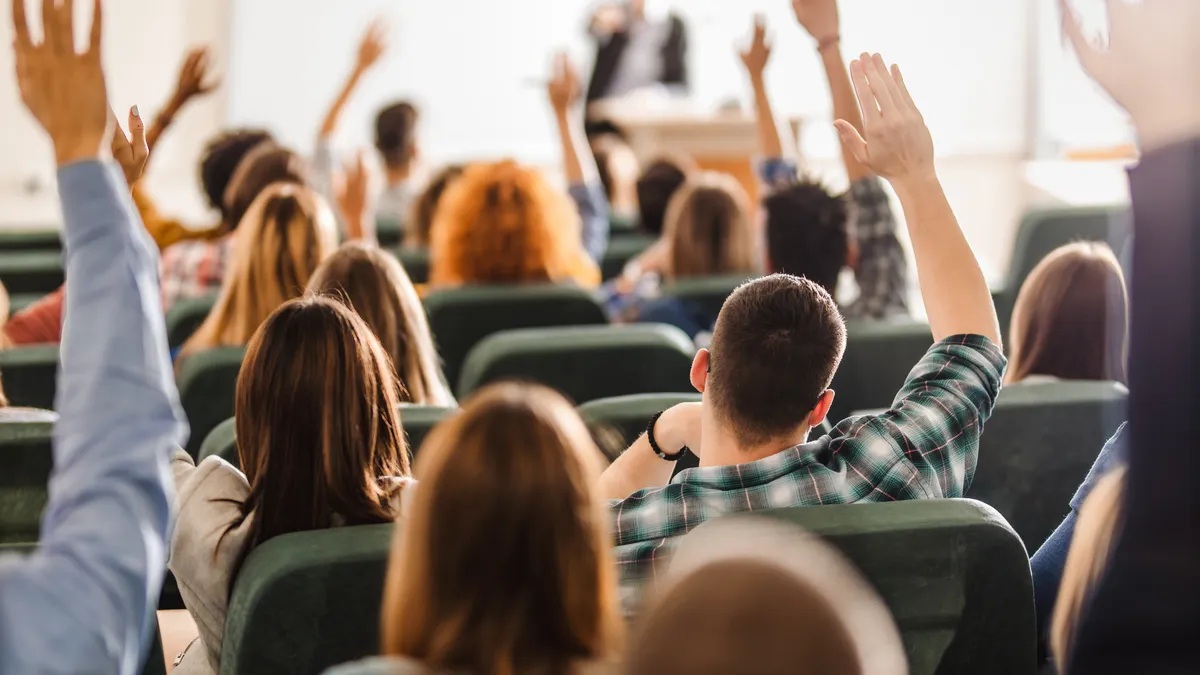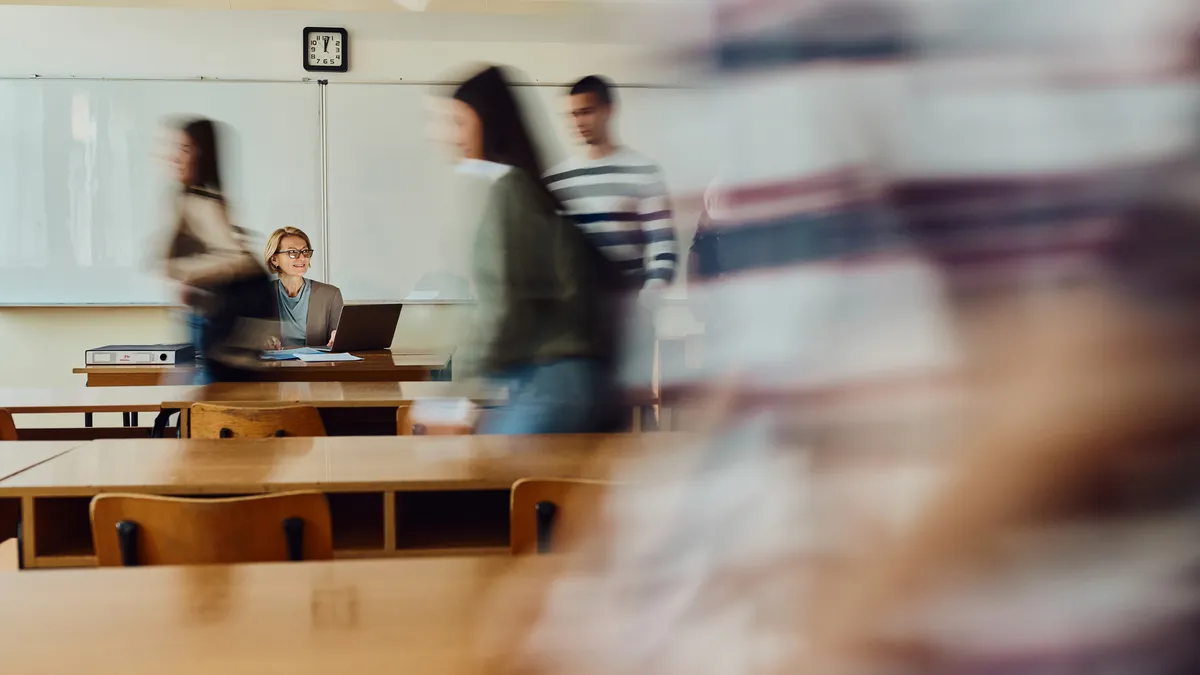The University of Dayton was founded as St. Mary’s Institute but changed its name to celebrate the institution’s relationship to the city in which it stands. President Eric Spina says the town-and-gown relationship remains very strong to this day, and it was this idea, coupled with the traditional Catholic Marianist principle of dignity for all people, which guided his process to the university’s new strategic vision.
We caught up with Dr. Spina to talk about the vision and how it affects the whole community, as well as the important role social media plays in his outreach strategy.
Note: These comments have been edited and condensed for clarity.
EDUCATION DIVE: Can you talk about the direction you see the University of Dayton going?
ERIC SPINA: It was really about identifying the times we find ourselves in and some of the issue that we’re struggling with as a world, as a country and here locally. We feel that it’s important to anchor our vision in the reality of what we, as a research institution, can do to improve our community … through deep engagement [with] the city of Dayton, deep engagement nationally and deep engagement locally.
[We’re] building on experiential learning … focusing on innovation that both leads to social transformation, but also leads to mentor creation and the development of economies here in Dayton, and … the intersection of sustainability and human rights.
We’re also focusing on autonomous systems. … There are a number of industries and government labs and other higher ed institutions that we’re looking to partner with. … This goes beyond self-driving cars to as pervasive as autonomous systems are going to be in healthcare [and] banking.
[Our] third [focus] is yet to be defined, but will be in the applied health sciences and biology area.
Can you talk about the difference between a strategic plan and a vision for the university, and why you opted for the latter?
Spina: The University of Dayton, as I arrived, I noticed that it was in very good shape. I understand a lot of these transitions happen when something needs to be fixed. So it’s really not that something couldn’t get better, but it’s nothing that needed my undivided attention. Enrollment is strong, programs are strong. … The last president did a great job in updating the facilities. The university is in good shape.
No doubt we need to think about the future, but I didn’t think about next year or the following year or two to three years down the road. I felt, given the hyper-competitive environment in higher education, given the challenges we face on a financial front of higher ed as a sector, given the challenges we face as a country … I think we should look out 20 years and see what kind of university we want to be.
If we don’t know what we want to become, we’d end up some place that we didn’t want to be. [So I said] let’s think about our values that we want to be certain endure. Let’s think about those things that are authentically University of Dayton that we want [to keep]. … Let’s look at our strengths and let’s build on those strengths, and let’s [strengthen our weaknesses].
It’s intended to be aspirational. It’s intended to be broader in scope, less specific in detail, but really set a high bar in terms of the kinds of students we want to develop and … the kinds of impact that we want to achieve.
We thought about 20 years … for two reasons: Young people born today will be at the tail, or kind of in the midst of their education in 20 years.
Thinking about really a generation from now what the University of Dayton will be, I think, kind of resonated with people.
The University of Dayton has had, while they didn’t call it strategic visioning, at least two moments where they were taking long-term [looks] and really taking big bets.
Facebook Live was also a part of your listening strategy, I’m told. That’s amazing. What are the benefits of a platform like Facebook Live to reach out to the UD community, and in what other ways are you — and can universities in general — leveraging technology to engage the campus community?
Spina: I said coming in here … I wanted to make sure whatever vision we came up with was authentic, so I really wanted to talk to a lot of ppl who really lived the University of Dayton community in a variety of ways.
As we were about halfway through [a series of townhalls in major cities], we said we’re missing the alum that is in Iowa, and we’re missing the 20 alums who are in Tampa, so one of our social media team members said, "Hey, let’s use Facebook Live" [to expand the reach during these meetings].
So we said as we move forward, let’s do one that’s just on Facebook Live. When the hour was over, I wanted more. I know because several people wrote to me afterwards and said … "I just want you to know this really was important to me as an alum to be able to participate in the process, even if you didn’t get to my question or get to hear my idea."
As we move forward now, I haven’t kept it a secret that one goal of this strategic vision process is to develop themes and priorities for a capital campaign. Once armed with the vision, we’re going to get back on the road and back on Facebook Live and other social media so people can know what activities we’re planning, how people can get involved and lend their expertise.
I’ve become very, very active on social media since I got here. I run my own Twitter, I run my own [Instagram]. And especially on Twitter, I’ve had a number of interactions with folks and I’ve been able to get their thoughts on what’s good for the university.
It’s really allowed us to engage with more people and really get their impact in a meaningful way.
There are times I’d be lying if I said someone tweets something at you that shows a misunderstanding of something you’ve done or something going on at the university, and I feel like I don’t want to get into a war in 140 characters, so I try not to respond to something that really requires deeper engagement; I try to get in touch with that person [offline, but overall there are] pretty minor drawbacks.

















